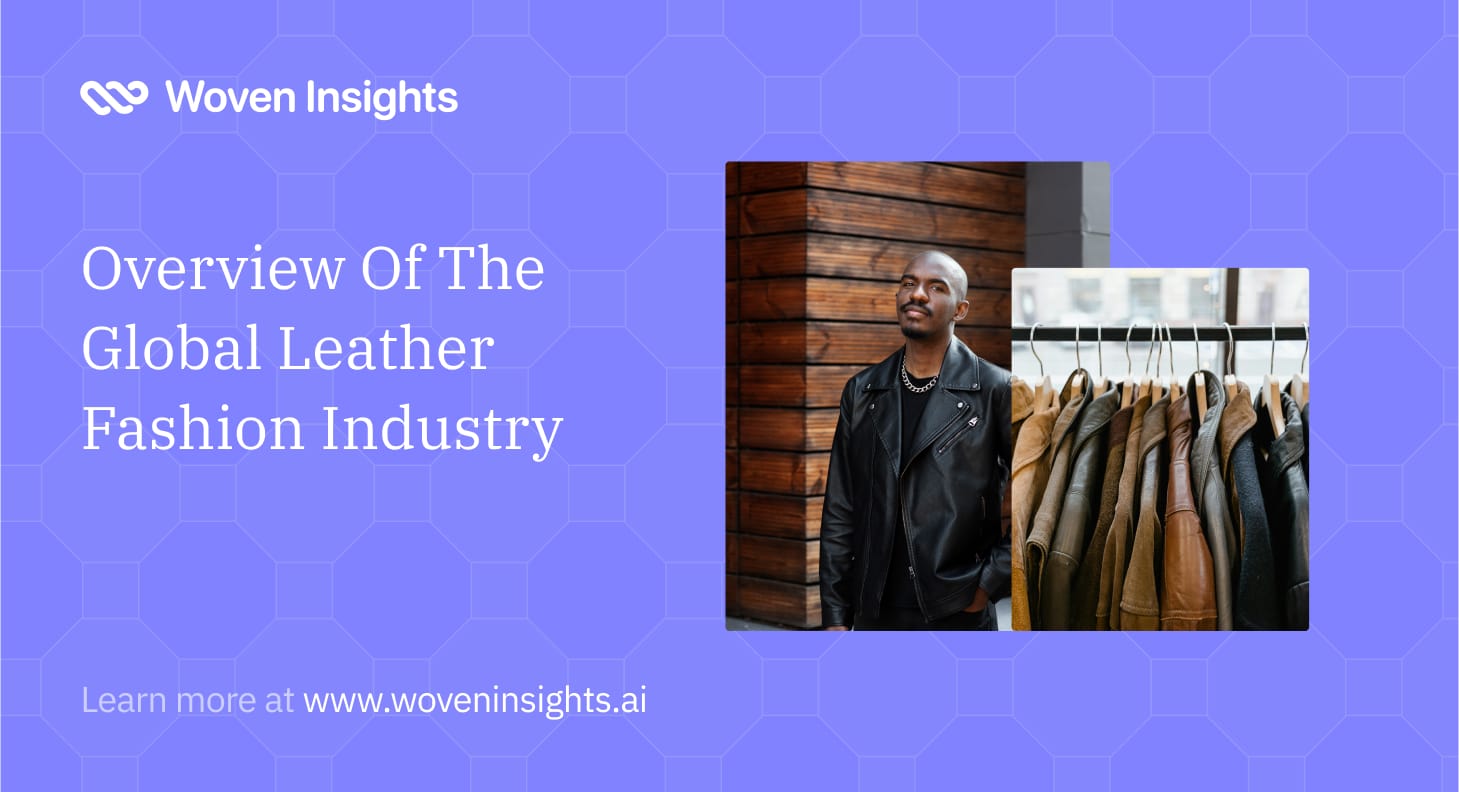Overview Of The Leather Fashion Industry
Read how the global leather fashion industry combines traditional craftsmanship with modern innovation, sustainability, and evolving consumer preferences.

The history of leather in fashion is a rich narrative that spans thousands of years, reflecting the material's evolution from a practical necessity to a symbol of luxury and cultural identity.
Leather's use dates back to prehistoric times, with early humans utilizing animal hides for clothing and shelter. By around 1200 BC, ancient civilizations such as the Egyptians, Greeks, and Romans began to refine leather crafting techniques. The Egyptians developed advanced tanning methods, using leather for garments, footwear, and ceremonial items. In Greece and Rome, leather was integral to military gear, with soldiers donning protective armor made from durable hides.
The 20th century witnessed a dramatic shift in the perception of leather fashion. Initially valued for its practicality, leather became synonymous with rebellion and counterculture. The leather jacket emerged as an iconic symbol of nonconformity, popularized by Hollywood figures like Marlon Brando and James Dean in the 1950s. By the 1960s and 1970s, it was embraced by punk rock movements, where it became associated with anti-establishment attitudes.
High fashion began incorporating leather into designer collections by the late 20th century. Designers such as Yves Saint Laurent and Gianni Versace showcased leather's versatility in their works, solidifying its status in luxury fashion.
Today, the global leather fashion industry is a multifaceted sector that combines traditional craftsmanship with modern innovation, sustainability, and evolving consumer preferences.
Retail Market Size and Growth Projections For Leather Fashion
Here are the key insights regarding the market size and growth projections:
Market Size and Projections
- Global Leather Goods Market: The leather goods market is projected to reach approximately USD 317.91 billion in 2025, with a forecasted growth to USD 392.39 billion by 2030, reflecting a compound annual growth rate (CAGR) of 4.3% during this period.
- Luxury Leather Goods Market: The luxury segment is also witnessing robust growth. The global luxury leather goods market was valued at USD 56.7 billion in 2023 and is expected to grow from USD 60.33 billion in 2024 to around USD 99.1 billion by 2032, at a CAGR of 7.11%.
- Overall Leather Goods Market Valuation: Another report estimates the global leather goods market was valued at USD 468.49 billion in 2023, with projections reaching USD 738.61 billion by 2030, indicating a CAGR of 6.7%.
Regional Insights
- The Asia-Pacific region is anticipated to be the fastest-growing market for leather goods, driven by rising disposable incomes and changing consumer preferences.
- Europe currently holds the largest share of the leather goods market, accounting for approximately 37.72% of the total market in recent years.
Market Drivers
Several factors are fueling the growth of the leather fashion retail market:
- Rising Disposable Incomes: Increased consumer spending power in emerging economies is boosting demand for luxury leather products.
- Fashion Trends and Innovation: There is a growing trend towards premium quality and sustainable products, encouraging brands to innovate and offer eco-friendly options such as Mushroom leather (mycelium), Cactus leather, and Piñatex (pineapple leather).
- Digitalization and E-commerce Growth: The rise of online shopping platforms has expanded access to leather goods, particularly luxury items, enhancing consumer engagement and sales.
Product Segmentation For Leather Fashion
The global leather industry is characterized by diverse product segmentation, reflecting its wide-ranging applications across various sectors. Here’s an overview of the key segments within the leather market:
1. By Product Type
- Footwear: This is the largest segment of the leather market, accounting for approximately 50% of leather production. It includes various styles such as formal shoes, casual shoes, boots, and sandals.
- Apparel: Leather clothing includes jackets, skirts, trousers, and other garments. This segment is popular in fashion and often associated with luxury and style.
- Luggage and Handbags: This segment encompasses a range of products including travel bags, suitcases, backpacks, and various types of handbags (e.g., tote bags, clutches).
- Accessories: This includes smaller items such as wallets, belts, straps, and other leather goods that complement clothing and footwear.
- Home Décor: Leather is also used in furniture (like sofas and chairs) and decorative items. This segment is growing rapidly due to increasing consumer interest in durable and stylish home furnishings.
2. By Leather Type
- Genuine Leather: Valued for its durability and quality, genuine leather is preferred for high-end products. It includes various grades such as full-grain and top-grain leather.
- Synthetic Leather: Also known as faux leather or vegan leather, this segment is expanding rapidly due to rising demand for cruelty-free alternatives and cost-effectiveness. It includes materials like polyurethane (PU) and polyvinyl chloride (PVC).
3. By Distribution Channel
- Offline Retail: Traditional brick-and-mortar stores remain the dominant channel for leather sales, allowing customers to physically assess products before purchase.
- Online Retail: The online segment is growing quickly, driven by increased internet penetration and consumer preferences for convenience. E-commerce platforms offer a broader selection of products and often cater to niche markets.
4. By Geography
The global leather market can also be segmented geographically into regions such as North America, Europe, Asia-Pacific, South America, and the Middle East & Africa. Each region exhibits distinct consumer preferences and market dynamics.
In summary, the global leather industry is segmented into various product types including footwear, apparel, luggage, accessories, and home décor; by leather type into genuine and synthetic; by distribution channels into offline and online; and geographically across major world regions.
About Woven Insights
Imagine if you had access to real-time fashion retail market and consumer insights, from more than 70 million real shoppers and more than 20 million analyzed fashion items from global fashion brands - with leather products accounting for almost a million of the products.
That's basically what Woven Insights offers fashion brands, manufacturers and research teams of all sizes - with the best pricing in the industry.
Introducing Woven Insights
Woven Insights provides you with all the actionable data you need to create fashion products that are truly market-ready and consumer-aligned.
Click on the Book a demo button below to get started today.
